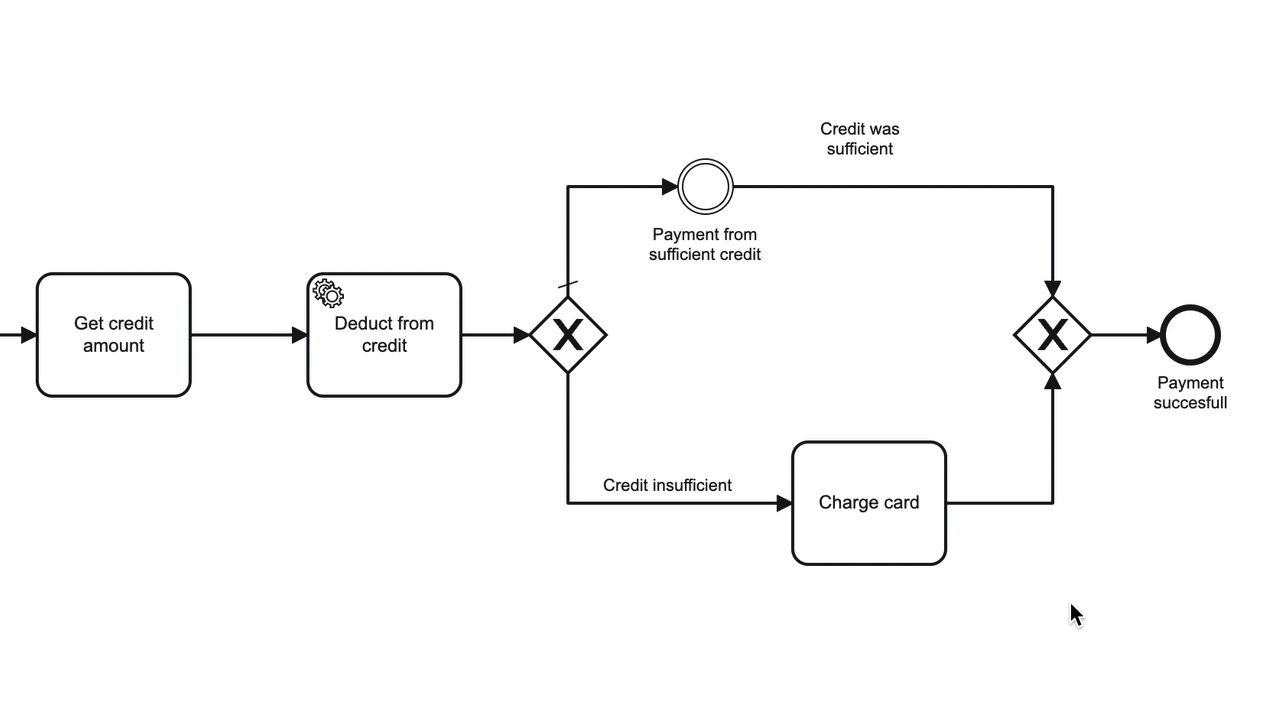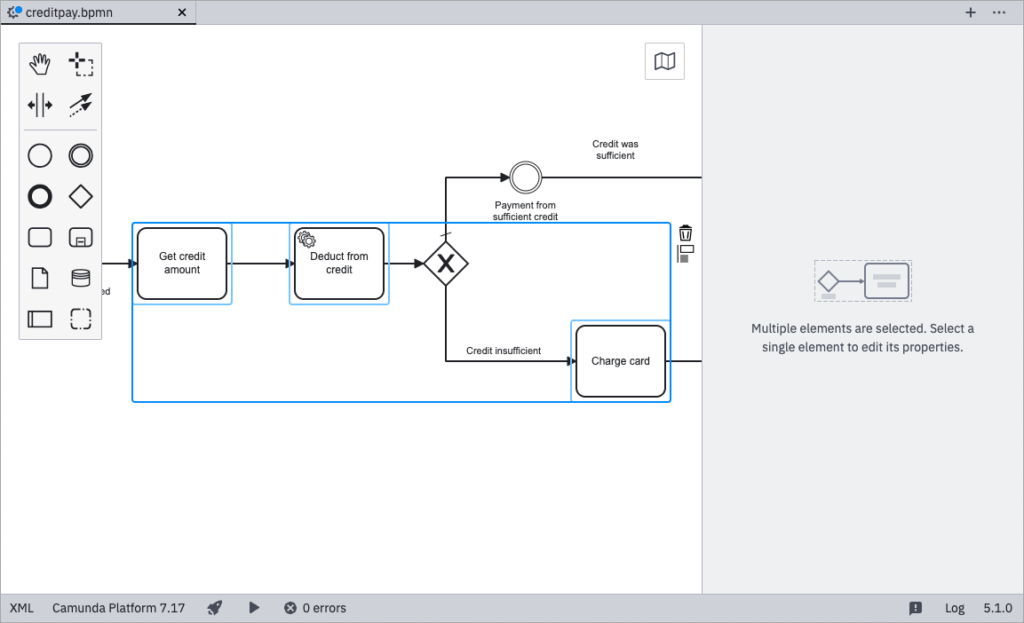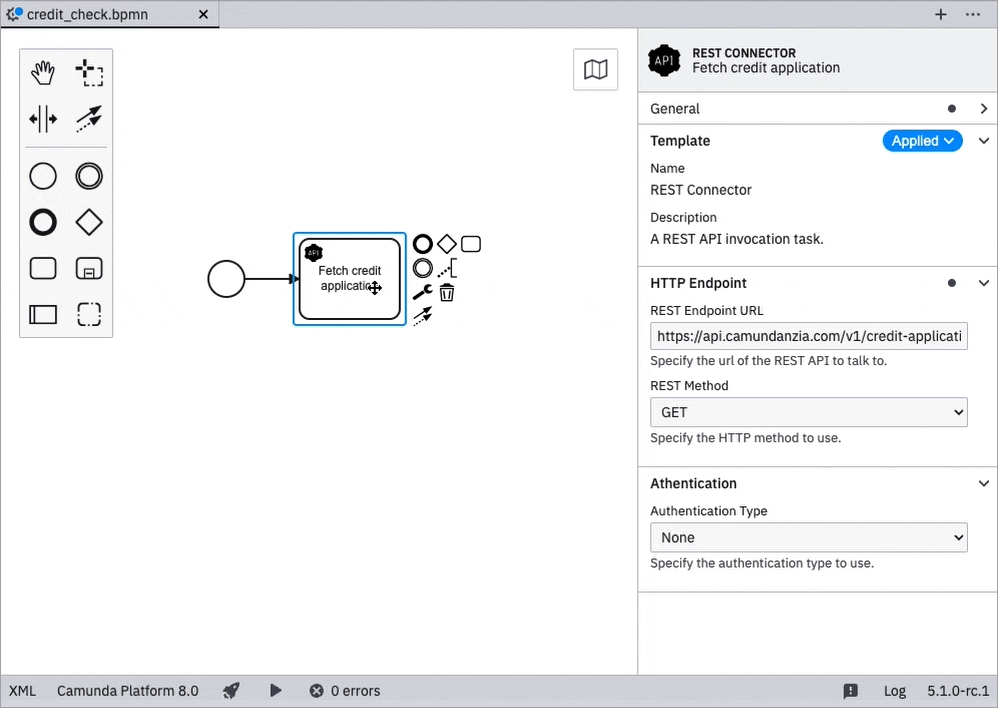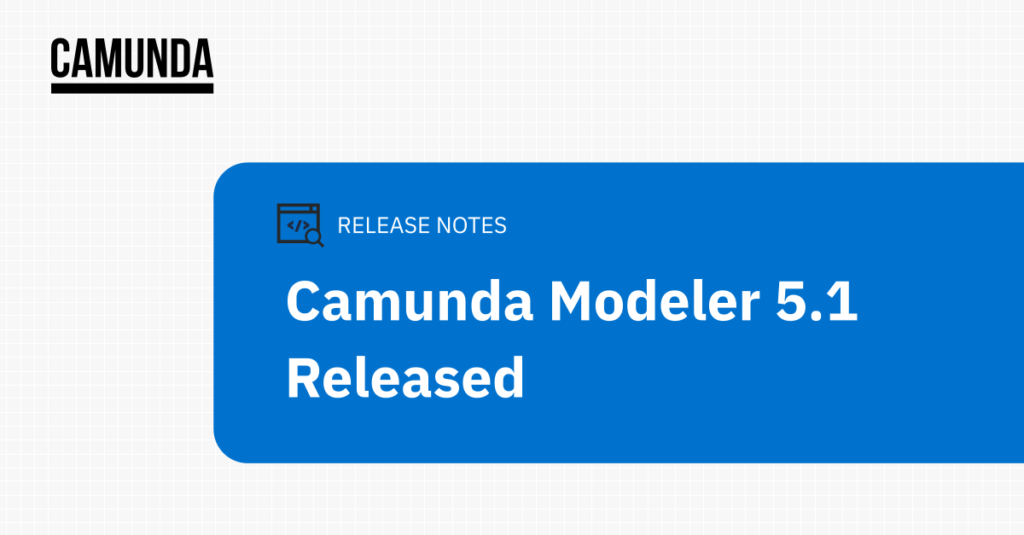We’re pleased to announce the release of Camunda Desktop Modeler 5.1.
The newest version of Camunda Desktop Modeler improves the diagram editing experience. On the modeling canvas, we’ve significantly revamped the selection UX by adding a multi-select context pad, a dedicated multi-selection outline, and more. Multi-selection is properly indicated in the properties panel, too. Infrastructure-wise we ship conditional properties as a major enhancement to element templates—our solution for domain-specific editing—so that you can take advantage of the full potential of element templates as the universal building blocks for your process models.
Read this blog post to learn more details about these features, and download the latest release to start modeling right away.
The multi-select context pad
With the latest release of Desktop Modeler, you can now conveniently perform actions for multiple selected elements. We have unified the user experience by making the context pad now available for multiple selection. From here, you can now align and distribute model nodes with ease. We also improved the Align and Distribute actions to work more intuitively in the context of BPMN and DMN diagrams.

Refined selection UX
To power the multi-select context pad and to make changes to complex process models more convenient, we refined the whole selection behavior. Selecting multiple elements now follows more intuitive patterns that we have identified from user observations over the past years.

Clear outlines now indicate what the outer box of the multi-selection is and what the child elements are. In addition, the properties panel is now consistent with the selection and allows changes only when a single element is purposefully selected. With these changes, we follow our paradigm of a lean experience that does not stay in your way so you can focus on modeling excellent business processes.
Conditional properties for element templates
Element templates allow you to create predefined configurations for BPMN elements. This means that you can create domain-specific BPMN elements that can then be easily used by others in process modeling, ensuring that only valid data for the domain-specific use case can be entered into the properties panel. The template takes care of binding the custom properties to the proper execution properties (i.e. input/output variables and headers).
This release adds support for conditional properties in your element templates. This means that it is now possible to create dynamic element templates that make the properties panel respond to user input by showing or hiding fields depending on the input of other fields.

With easy-to-write rules, you can now control the behavior of the properties panel, hide contextually irrelevant details, and guide your template users safely through the use of your templates.

You can learn more about how to define conditional properties (and element templates in general) in the documentation. If you want to get started right away, you can also try our sample templates from the Desktop Modeler repository.
ℹ️ Please note that this feature is currently only available for Camunda Platform 8.
There is more
We have added several other smaller improvements to further enhance the user experience.
- We fixed an issue where the properties panel input fields occasionally reset focus, so you can now type reliably.
- Regular expression patterns now work in Camunda Forms.
- Alert and file dialogs are now consistent with the UX of your OS, so you don’t get interrupted in your workflow.
- If you opted-in to telemetry, you help us to better understand how you use our applications. We do this carefully to support you with a continuously improved experience. With this release, we now use Mixpanel as our primary knowledge base for metrics to find patterns in Desktop Modeler usage that reveal points of friction that we may not be aware of. A comprehensive overview of what we track, how we do this and why, can be found in our telemetry documentation.
For a comprehensive list of all changes, please visit the changelog.
Looking forward
Download the latest release of Camunda Desktop Modeler to try these new features and, most importantly — share your feedback with us.
Did we miss anything? Did you spot a bug, or would you like to suggest an improvement? Reach out to us via our Camunda Community Forum, tweet us @Camunda, or file any issue you find in our Camunda Modeler issue tracker.
Stay tuned for future updates!

